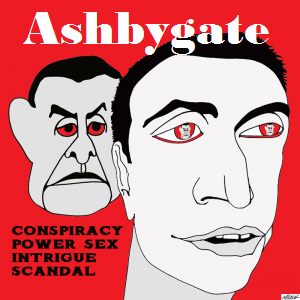Australia’s failure to meet anti-torture treaty obligations is under fire — contestation is now driving overdue reform, especially in youth detention. Gerry Georgatos reports.
A LANDMARK INSTRUMENT IN international human rights law is The Convention Against Torture and other Cruel, Inhuman or Degrading Treatment or Punishment 1984 (CAT).
While it has prompted global cooperation in recognising torture as a jus cogens norm, its implementation reveals persistent contestation, especially in domestic contexts. Contestation surrounding the interpretation and application of CAT in Australia has led to both resistance and new modes of cooperation.
By examining Australia's ratification and partial implementation of CAT, including its obligations under the Optional Protocol (OPCAT), we highlight tensions between state sovereignty and international oversight.
A focal point is the treatment of the First Peoples, in carceral settings, where systemic mistreatment arguably constitutes breaches of CAT. I draw on legal instruments, UN reports, domestic legislation and civil society submissions to explore how international contestation has catalysed cooperative mechanisms such as national monitoring systems and increased NGO engagement.
Ultimately, while contestation continues to pose challenges, it also acts as a driver for legal and institutional reform, fostering progress in the implementation of international human rights norms.
The CAT represents one of the most universally recognised human rights instruments, prohibiting torture under all circumstances. As a legally binding treaty, it imposes positive obligations on State parties to prevent acts of torture and cruel, inhuman or degrading treatment. However, despite the Convention's widespread ratification, compliance and implementation vary significantly, exposing tensions in international law between global cooperation and national sovereignty.
I encompass an analysis of international legal obligations under CAT, Australia's domestic legal framework, and the sociopolitical dynamics affecting First Peoples.
International legal obligations under CAT
The CAT defines torture as any act by which severe pain or suffering, whether physical or mental, is intentionally inflicted by or with the consent of a public official for purposes such as obtaining a confession, punishment, intimidation, or discrimination.
Article 2 prohibits torture absolutely, allowing for no exceptional circumstances. State parties are also obliged under Articles 4–16 to criminalise torture, investigate allegations, prosecute perpetrators, and offer redress to victims. The OPCAT introduced additional obligations to establish a National Preventive Mechanism (NPM) to monitor places of detention.
Australia ratified CAT in 1989 and OPCAT in 2017 but has struggled to fully implement its obligations. Parallel domestication of universal conventions are paramount to an unfolding social justice vocabulary and immutable fundamental human rights. While federal legislation such as the Crimes (Torture) Act 1988 criminalises torture, it does so only for acts committed outside Australia, leaving domestic incidents in a legal grey zone.
This outrageous hypocrisy and piecemeal approach to implementation, alongside federal-state jurisdictional complexities, undermines comprehensive compliance. This has allowed Australian carceral settings to deteriorate rights to degrading and torturous practices, such as indefinite isolations of detainees, spit hoods, three-point shackling.
I have had a lot do with restoratively supporting people post-release from prisons — adults and juveniles. There are 132 Australian prisons, of which 17 are dedicated to children, from age 10. The First Peoples are disproportionately represented in the Australian prisoner population. I was a prison reformist and suicidality researcher. Two per cent of the Australian population have been to prison — one in 50 Australians. It is appallingly high. When we disaggregate to the First Peoples, one in six have been to prison.
From a racialised lens, disaggregated to the First Peoples, Australia is the "mother" of all jailers, the highest jailing rate in the world. I have been the relentless critic of Banksia Hill and Don Dale juvenile detention centres for decades, and I am part of the coalescing of the current Class Action against the State of Western Australia regarding Banksia Hill. Lawyers Stewart Levitt and Dana Levitt have spearheaded the class action. Matters are now before the Federal Court.
In short, there is nothing restorative, redemptive, rehabilitative, nor life transformative about Banksia Hill. In my experience, it is cruel, degrading and tortuous.
The OPCAT is a separate treaty adopted in 2002 to strengthen the protection of persons deprived of their liberty by establishing a system of regular, independent visits to places of detention. It introduces preventive measures rather than just reactive mechanisms for addressing torture and ill-treatment.
The key additional obligations and protocols introduced by OPCAT are anchored by the establishment of a National Preventive Mechanism, functionally independent, adequately resourced, and granted unrestricted access to all places of detention. Places of detention include prisons, police stations, immigration detention centres, psychiatric institutions, military detention, and youth detention facilities. The NPM must be empowered to regularly examine the treatment of persons deprived of liberty.
The NPM must make recommendations to authorities to improve conditions and prevent ill-treatment, submit proposals and observations on legislation (Article 19c), ensure that its personnel are free from retaliation or obstruction (Article 21).
The OPCAT created the Subcommittee on Prevention of Torture (SPT), an international expert body to conduct visits to places of detention in state parties and to advise and assist states in the establishment and functioning of NPMs (Article 11). States must cooperate with the SPT, allowing it unannounced access to places of detention and the opportunity to conduct private interviews (Article 14).
The SPT works in strict confidentiality, sharing findings and recommendations with the State and publishing reports only with the State’s consent (Article 16). I would like to argue that the publishing of such reports must be mandatory and not at the discretion of any party. Rather, the State should have a prior reading with a time-limited period of a right of reply to seek corrections if applicable. Individuals and organisations must not be subjected to sanctions, reprisals, or intimidation for communicating with NPMs or the SPT (Article 15).
OPCAT shifts the focus from responding to torture to preventing it by empowering independent monitoring bodies, both nationally (NPMs) and internationally (SPT). These mechanisms increase accountability, transparency, and systemic reform in detention settings.
In Australia, the implementation of OPCAT has been gradual and complex due to its federal system and the need for cooperation between the Commonwealth and state/territory governments. Australia has arguably implemented some obligations under OPCAT, particularly in relation to the NPM. Australia signed onto OPCAT 19 December 2009 and ratified OPCAT on 21 December 2017.
Australia committed to fully implement OPCAT within three years, by January 2020. Australia has adopted a multi-body NPM model, reflecting its federal system. This means different NPM bodies operate in different jurisdictions. The Australian Human Rights Commission (AHRC) was appointed as the interim NPM Coordinator in 2022 and to overseeing coordination among NPM bodies across states and territories. The AHRC facilitates national reporting and engagement with theUN’s Subcommittee on Prevention of Torture (SPT). Not all States and Territories have nominated their formal NPMs, for instance Western Australia, the Northern Territory and New South Wales. Australia missed the January 2020 deadline for full implementation arguably due to coordination difficulties between federal and state governments.
In 2022 and 2023, the UN Subcommittee on Prevention of Torture postponed its planned visit to Australia due to lack of access to some detention sites (notably in NSW and Queensland), citing concerns about Australia's readiness to meet OPCAT obligations. As of 2025, the AHRC released baseline reports assessing existing detention oversight. Australia is still not fully OPCAT-compliant, but several jurisdictions are arguably progressing toward implementation. The UN continues to press Australia to fulfil its OPCAT commitments, especially regarding access to all detention sites.
I refer to the ruling by Judge Paul Tottle of the Supreme Court of Western Australia in relation to the Banksia Hill Detention Centre, a juvenile detention facility in WA that has faced significant scrutiny over conditions and treatment of detainees. The case involved A.R. (a minor), a teenage boy held in prolonged solitary confinement at Banksia Hill Detention Centre and later Unit 18 at Casuarina Prison (a maximum-security adult prison). A.R. was placed in conditions involving extreme isolation, with limited access to education, fresh air, exercise, or meaningful human contact, often confined for up to 23 hours per day.
Tottle’s decision (March 2023) found breaches of the Young Offenders Act 1994 (WA) and Judge Tottle found that the Department of Justice had acted unlawfully by failing to provide A.R. with the minimum standards required by the legislation. The detention conditions violated statutory obligations, including requirements to provide education, proper care, and rehabilitation. Judge Tottle described the routine and extended use of lockdowns as “cruel” and inappropriate, especially for vulnerable children. The detention regime lacked the safeguards needed to ensure that such treatment was justifiable or proportionate.
Though WA does not have a statutory human rights act, the decision highlighted serious rights concerns, echoing international standards under the Convention on the Rights of the Child (CRC) and OPCAT principles.
After the ruling, it emerged that the WA Government had failed to comply with the court’s directions regarding the treatment of the child. Despite orders to provide better conditions and support, A.R. reportedly remained in similar or worse conditions. This led to serious concerns that the Department of Justice —and by extension, the WA Government—was in potential contempt of court by defying court orders, continuing harmful practices and failing to act in a timely or adequate manner to rectify the unlawful conditions.
The Tottle decision has national significance as it reinforces the legal limits on how juveniles can be detained, raising questions about Australia's compliance with OPCAT and the CRC and highlighting the failure of state mechanisms to uphold child protection in detention. It triggered calls for independent oversight, greater transparency, and OPCAT-compliant monitoring, especially with WA being one of the states that had not yet designated a National Preventive Mechanism (NPM).
The Tottle decision exposed the unlawful and inhumane treatment of a child in WA’s youth justice system, specifically at Banksia Hill and Unit 18. The ruling held that the WA Government breached its legal duties under the Young Offenders Act, with subsequent inaction leading to allegations of contempt of court. This case underscores the urgent need for robust independent monitoring and better compliance with international human rights standards, including those under OPCAT.
Judge Tottle stated:
Subjecting young people – children – to solitary confinement on a frequent basis is not only inconsistent with the objectives and principles of the [Young Offenders] Act but also with basic notions of the humane treatment of young people. It has the capacity to cause immeasurable and lasting damage to an already psychologically vulnerable group.
“The Court has taken the extraordinary step of granting an injunction restraining Department staff from confining young people without appropriate orders and without providing the exercise they’re entitled to.”
These excerpts underscore the court's findings that the practices at Banksia Hill and Unit 18 were not only unlawful but also detrimental to the well-being and rehabilitation of young detainees. The rulings highlight systemic issues within the detention system.
Australia's domestic implementation and legal contestations
Despite its ratification of CAT and OPCAT, Australia has not incorporated the Convention into a national bill of rights. At the federal level, no specific legislative framework criminalises torture committed within Australia’s borders by state officials. While individual states and territories have enacted human rights protections—such as the Human Rights Act 2004 (ACT) and Charter of Human Rights and Responsibilities Act 2006 (VIC) — they remain fragmented and vary in scope.
This has prompted criticism from the Committee Against Torture and UN Subcommittee on Prevention of Torture. The Committee’s 2014 Concluding Observations expressed concern over Australia's failure to criminalise all acts of torture domestically and the limited enforceability of human rights standards. The UN’s 2022 suspension of its OPCAT visit to Australia, due to lack of access to some detention sites, symbolises the ongoing contestation between international oversight and Australia’s federal autonomy.
Impact on the First Peoples
The First Peoples, particularly youth, are significantly overrepresented in detention. Reports by the Royal Commission into Aboriginal Deaths in Custody (1991) and subsequent inquiries highlight systemic neglect, racialised violence, and preventable deaths. High-profile cases, such as the mistreatment of youth at Don Dale Detention Centre, sparked national outrage and drew international condemnation. The UN Committee Against Torture has repeatedly raised concerns about excessive use of force, solitary confinement, and lack of culturally appropriate care.
These systemic issues arguably amount to violations of CAT, particularly under Articles 1, 2 and 16. However, contestation arises in the classification of such mistreatment as “torture” under international law. Australia tends to categorise these abuses as misconduct or breaches of domestic criminal law rather than breaches of international human rights law. This interpretative divergence highlights the tension between international standards and domestic legal frameworks.
Emerging modes of cooperation: OPCAT and civil society engagement
Despite these challenges, contestation has led to new modes of cooperation. Australia’s ratification of OPCAT, though belated, prompted the establishment of the National Preventive Mechanism framework, involving multiple federal and state-level bodies. Civil society organisations such as the Human Rights Law Centre, Amnesty International, and National Aboriginal and Torres Strait Islander Legal Services (NATSILS) have played a key role in advocating for independent monitoring and legislative reform.
Although Australia missed its January 2022 deadline to fully implement OPCAT obligations, pressure from international bodies and domestic advocacy continues to drive progress. Several states, including Victoria and the ACT, have committed to transparency and NPM compliance, indicating a shift toward cooperative engagement. This process illustrates how contestation—such as international criticism and treaty body scrutiny—can catalyse reform through negotiated cooperation.
The role of international institutions and legal norms
International legal institutions, including the Committee Against Torture and the Subcommittee on Prevention of Torture, serve as mechanisms for oversight and normative guidance. Their ability to hold states accountable is limited by the principle of state sovereignty. However, their role in publicising abuses, making recommendations, and empowering civil society is significant.
Moreover, the designation of the prohibition of torture as a jus cogens norm means that no derogation is permitted. This strengthens the moral and legal obligation for states like Australia to comply, even amid domestic political resistance. The convergence of legal pressure, media scrutiny, and First Peoples activism has broadened awareness and reshaped public discourse around accountability and human rights compliance.
The CAT stands as a cornerstone of international human rights law, embodying a universal rejection of torture and related abuses. However, the implementation of CAT reveals an enduring tension between international norms and domestic sovereignty. This shows that Australia’s experience exemplifies how contestation over the scope, interpretation, and enforcement of CAT obligations can impede full compliance — particularly in relation to First Peoples, who remain disproportionately affected by systemic abuse in detention.
Yet rather than merely hindering progress, such contestation has also spurred new forms of cooperation. Australia’s ratification of OPCAT and the establishment of a multi-jurisdictional National Preventive Mechanism, alongside the active involvement of civil society and First Peoples advocacy groups, demonstrate how international pressure and domestic activism can drive institutional and legal reform. These developments reflect the evolving nature of international law, where dialogue, oversight, and contestation are not antithetical to cooperation but integral to its development.
The persistent mistreatment of First Peoples in carceral settings underscores the need for deeper engagement with both the legal obligations under CAT and the broader principles of justice and equality. This includes a commitment to transformative justice that centres First Peoples' self-determination, cultural safety, and structural reform.
While gaps remain between Australia’s international commitments and domestic practices, contestation has catalysed critical scrutiny and reform efforts that inch the system closer to compliance. In this way, contestation emerges not as a barrier but as a generative force — compelling states to confront shortcomings and engage in cooperative innovation. Thus, the implementation of CAT in Australia highlights international law’s dual nature as both a site of conflict and a mechanism for constructive transformations. Nevertheless, the slow grind to full implementation or the enshrinement in Australian law of international human rights rightly groups Australia with other laggards instead of leading the way as a human rights defender.
Gerry Georgatos is a suicide prevention and poverty researcher with an experiential focus on social justice.
 This work is licensed under a Creative Commons Attribution-NonCommercial-NoDerivs 3.0 Australia License
This work is licensed under a Creative Commons Attribution-NonCommercial-NoDerivs 3.0 Australia License
Support independent journalism Subscribe to IA.














